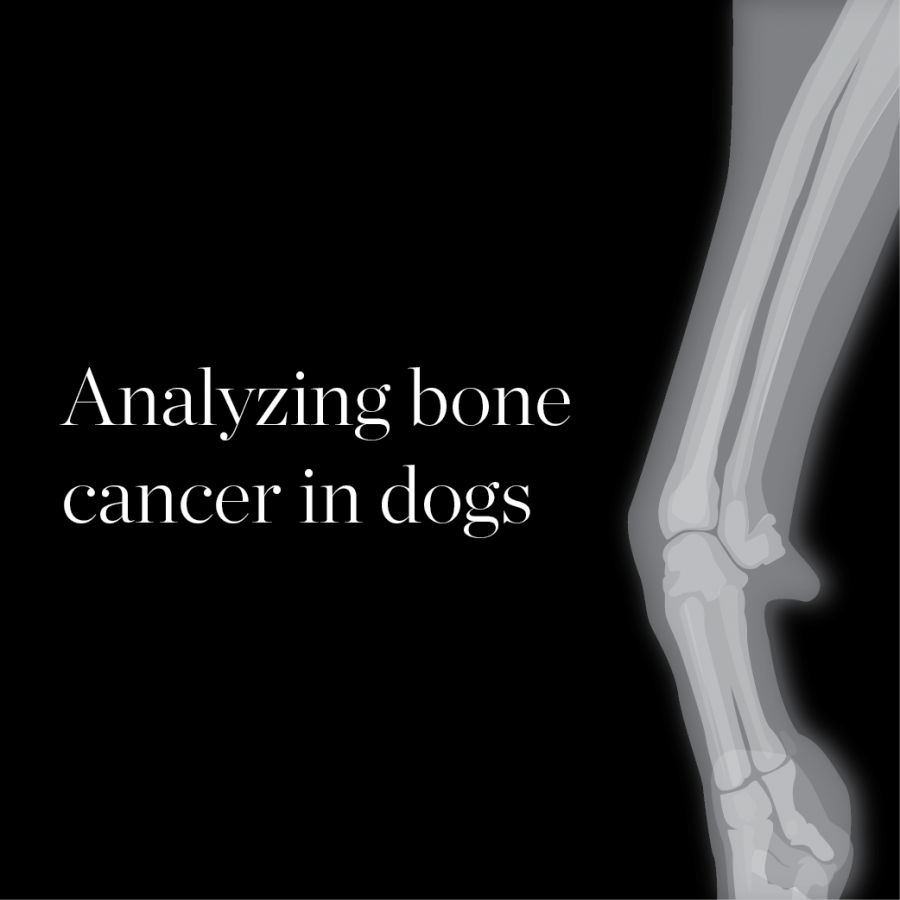Analyzing bone cancer in dogs
Apr 19, 2017
Timothy Fan is an associate professor in the Department of Veterinary Clinical Medicine. His position is divided between doing research in his laboratory, providing clinical services to companion animals with cancer and teaching the graduate students at the College of Veterinary Medicine. From 2000 to 2007, he focused on completing his doctorate from the University in Tumor Immunology, and has been involved in the College of Veterinary Medicine for about 20 years. Fan’s most recent study was published in 2016 and looked into a nanoparticle chemotherapeutic treatment for bone cancer that naturally occurs in dogs.
Technograph: Do you see possibilities for your work as a veterinarian crossing over to human treatments?
Timothy Fan: I think that there are a couple different opportunities to have that occur. One way that happens is tumors we see in dogs and cats are often very, very similar in genetics and biology, and clinical presentation in people.
Technograph: How does treating animals for diseases or using them for experiments play into your connection with them?
T.F.: Well I think that the bigger connection is with the pet owners often. Because I think the owners of pets with cancer tend to be very appreciative of what we could try to offer their pets. You know, you’re trying to help their family member.
Technograph: What’s your opinion on animal testing, outside of the veterinary world, such as for non-voluntary options?
T.F.: I think that what is important is to have what we call preclinical toxicology studies. That’s a mandate that’s put forth by the FDA for any type of new drug that is to be developed in human beings. You need to have some preliminary, preclinical toxicity studies. Meaning that you need to define the drug is safe in at least two species of animals before you can even contemplate moving it to a human trial.
Technograph: You used smaller particles to treat the cancer in your study. Can you explain that a little bit more and differentiate it from past treatments?
T.F.: This study was looking at a drug delivery strategy which we call nanoparticles. Nanoparticles are very, very small particles that you can’t see with your eye, but they can be engineered to contain different types of cargo. The cargo we were using is a chemotherapeutic agent; but the advantage is that you can functionalize or decorate the surface of the nanoparticle with targets that bring the nanoparticle to specific areas of the body. So we had decorated the nanoparticle with a drug called Pamidronate. Pamidronate, by its chemistry, has the ability to go to areas of active bone turnover. So when we gave these nanoparticles to dogs with bone tumors, the nanoparticle with the drug accumulated within the bone tumor, and therefore was releasing higher contents of that drug for the bone tumor.
Get The Daily Illini in your inbox!
Technograph: Do you think that based on the results of your research, a cure for cancer would occur sooner in animals than humans?
T.F.: Absolutely not. I’d love to say naively that what I do or what I could contribute will cure cancer, but that won’t happen. I think that I would be very satisfied by providing very incremental improvements in our certain understandings of different types of cancer. I think that if there were ever a cure for cancer, I don’t think it would be a global cure.
Technograph: What’s your opinion on taking small steps to get to get closer to a solution?
T.F.: I think it’s like trying to build a big brick wall, and I’m just putting one brick into that entire wall.
Technograph: What’s the next step for your nanoparticle research?
T.F.: To me, I don’t know if this nanoparticle story is going to advance further than what we’ve done. I would say that where I’m most committed and likely to contribute to is ongoing studies with other basic scientists that may be developing new therapies, like in chemistry. I think the nanoparticle was a great example of how different researchers with different backgrounds can come together and do something very exciting. So to have Professor Chang, who is a material science engineer, to work with me, who’s a veterinary oncologist cancer biologist, and to actually produce some very interesting research, I think that was a great example of how people who are from different backgrounds can come together and work on a common goal to study cancer therapy.






